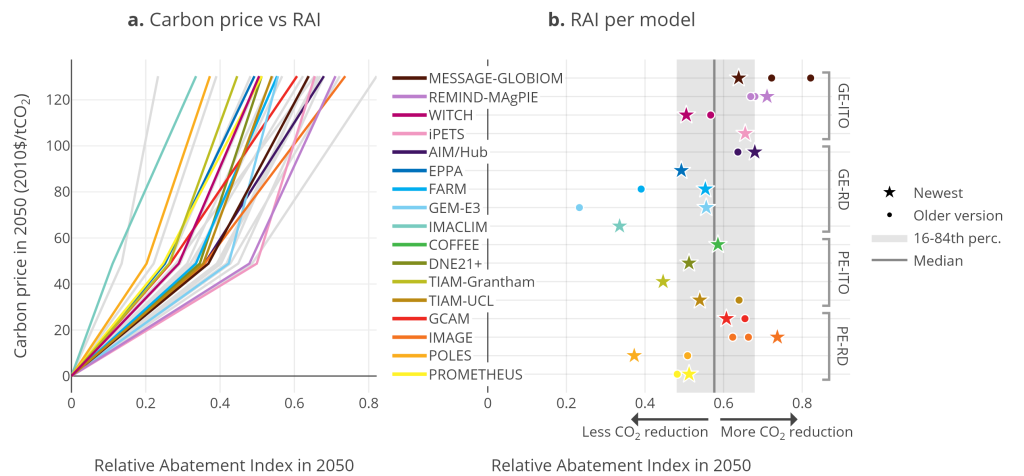IAM model diagnostics study
Climate models are often characterized by their climate sensitivity, but similar metrics are not used for IAMs yet. In a recent study led by Mathijs Harmsen, the authors propose and use a standardized method to assess the behaviour of integrated assessment models (IAMs), which can be used as part of all future IAM-based studies.
There is a high need for such an approach, since climate policy is largely based on the results of IAM assessments. Therefore, it is crucial to understand how model behaviour and its key underlying assumptions affect model outcomes. The study describes six indicators that show model behaviour under ambitious climate policy assumptions. The indicators assess the relative emission reductions compared to a no climate policy baseline (see Figure 1), the emission reduction strategy (i.e. the level of energy demand vs energy supply side solutions), the level of fossil fuel reduction and energy system transformation, the level of inertia and path dependency (i.e. how fast can models switch gear if the climate policy ambition changes) and the costs of energy reduction.

The approach is applied to 17 IAMs, assessing both older as well as their latest versions, as applied in the IPCC 6th Assessment Report. The study shows that the approach can be easily applied and used to identify key differences between models and model versions and that the comparison helps to link model behavior to model characteristics and assumptions.
- Artikel | 10 May 2021PBL site
- Tekstpagina | 12 November 2020IMAGE publications
- LinkDOI: